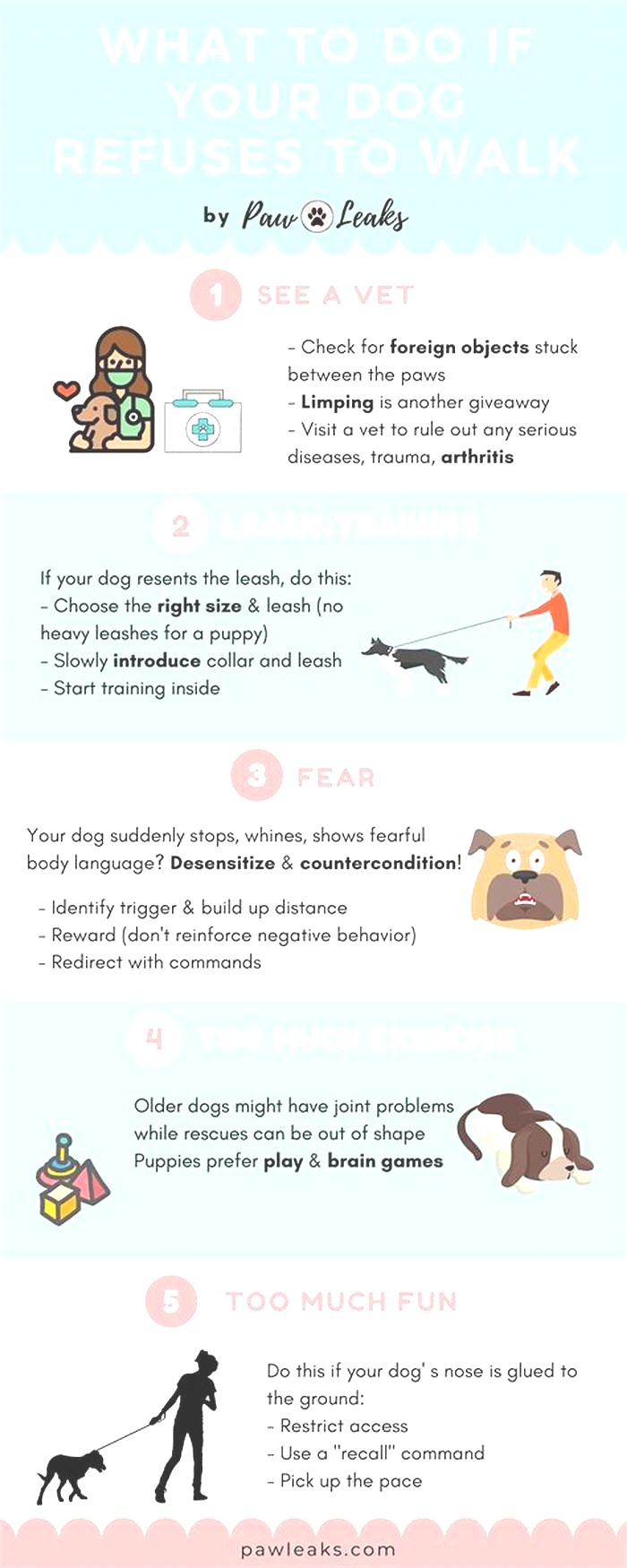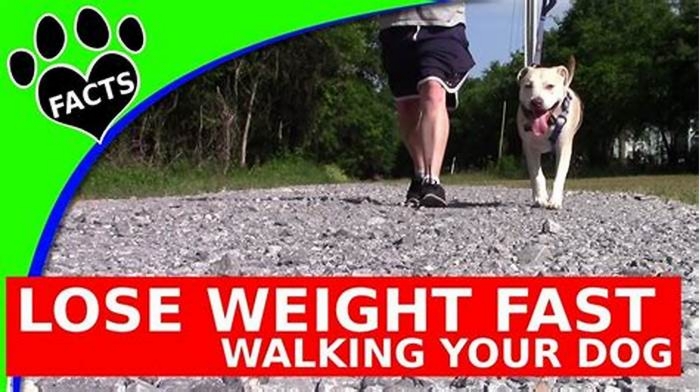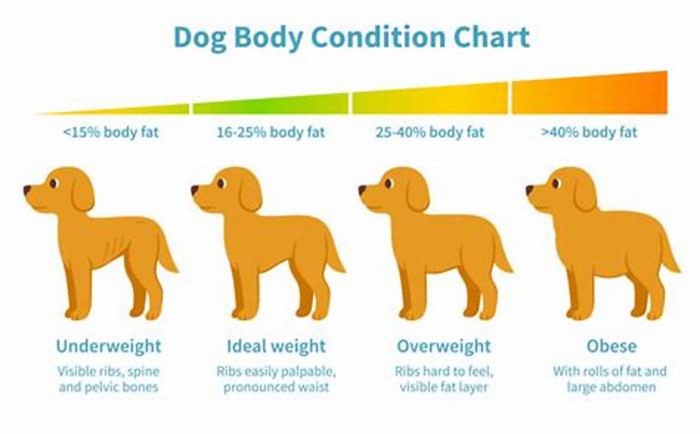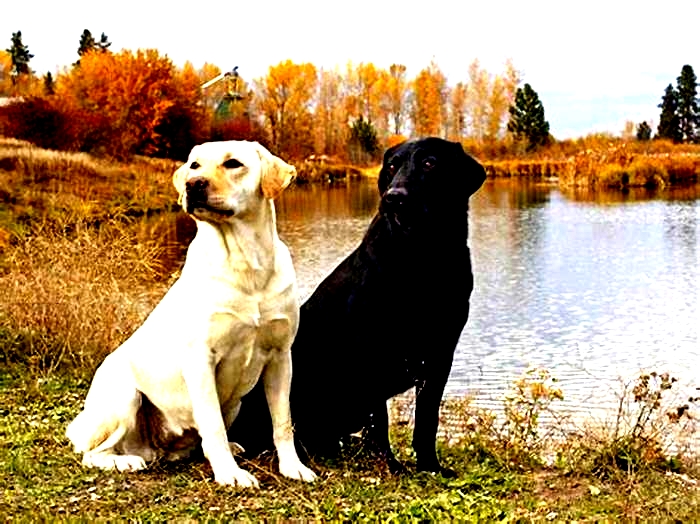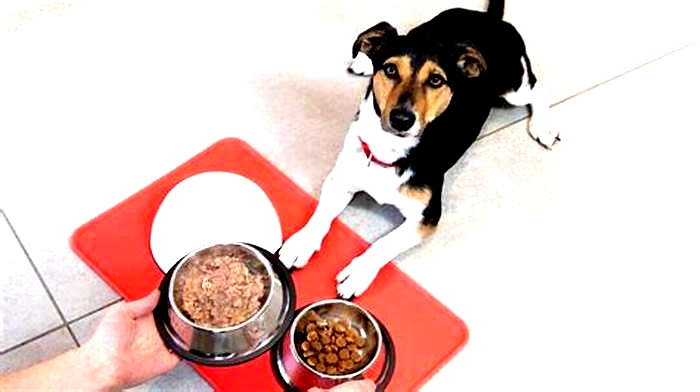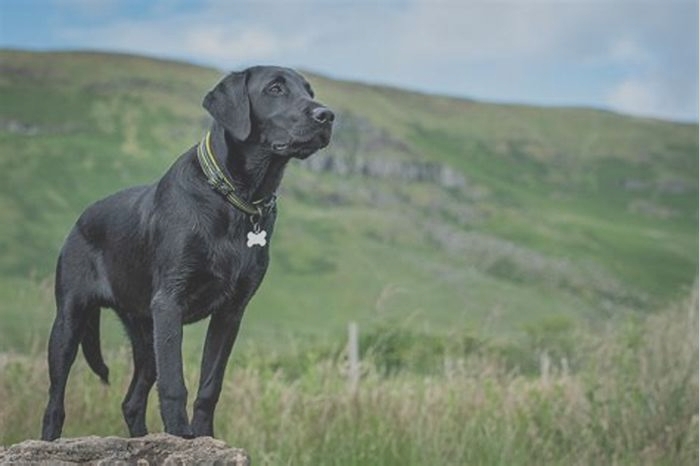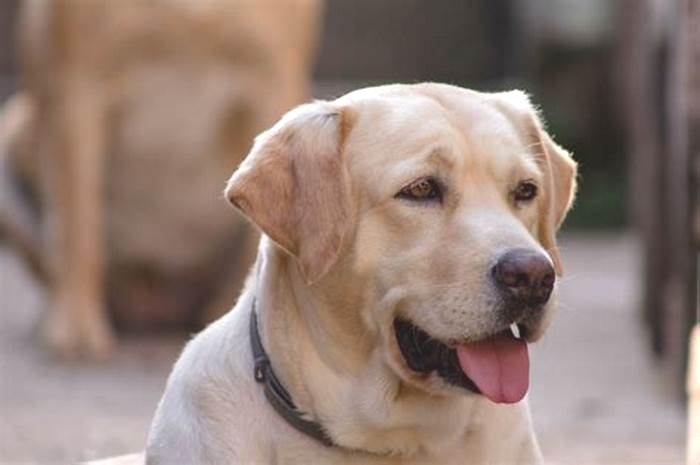Do dogs need days off from walking
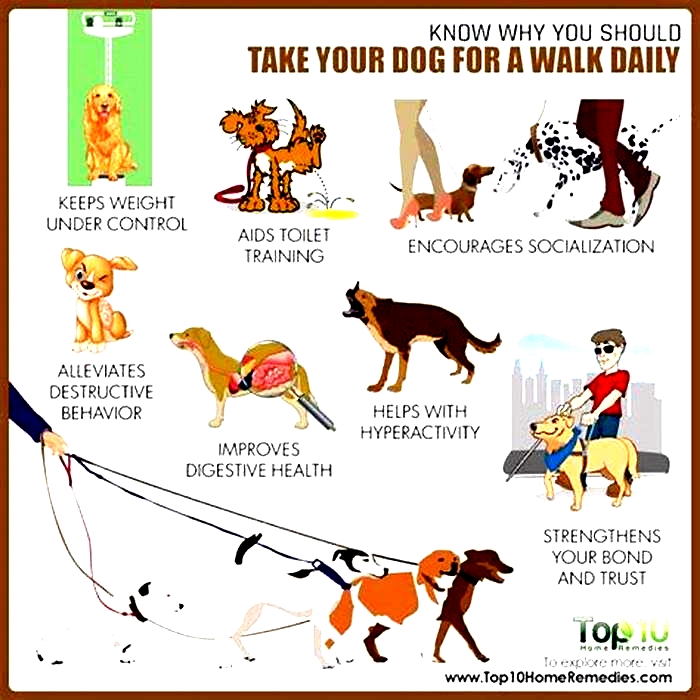
Why your dog doesnt need a walk every day

Do you take your dog for a walk every day?Surely youd be a bad owner if you didnt?No, you wouldnt. (Although, please note, laziness is NOT a good excuse for not walking your dog!)Its one of the myths of dog ownership, that dogs have to be taken out on a walk each day. And before you throw your hands up in horror at that statement, let me explain. Physical exercise will keep your dog fit but wont always tire them out. If you want your dog to be tired, work their brain instead.If your dog loves their walks and enjoys seeing all the sights, hearing the sounds and sniffing the scents of your neighbourhood each day, then feel free to go for a walk whenever you want. But other dogs dont. Some dogs, whether from a poor initial upbringing or a bad experience, find modern life overwhelming and can be stressed by traffic, or people, or other dogs.For these dogs, going out on a walk each day is stressful and over time, these dogs reset their arousal/stress levels to a high setting. Then that they can find it impossible to fully relax and rest and walks just keep adding to that arousal and stress.I love my job and am happy to go out (when allowed) to visit and help clients and their dogs. But I also need my Sundays when I can just potter and rest. Every living being needs some downtime away from the usual stresses and strains of life and thats true of your dog as well.Whats that? I can hear you muttering but my dog needs exercise. Yes, dogs do need some exercise every day, but striding along on lead next to you or chasing balls on the beach is not always the best exercise you can give your dog.If your dog becomes aroused and stressed when you take them out for walks, barking at anything that moves, lunging at other dogs or people, pulling like a train, or reluctant to walk anywhere then they will benefit from some downtime.Heres some ideas:
- Have a sniff walk, where you allow your dog to sniff as much as they want and tell you where they want to go
- Ditch that bowl and feed your dog in fun, interesting ways instead. Use a snuffle mat, scatter feed, fill Kongs and smear soft food on lickimats, and give your dog food puzzles to work out and food games to play. Use food for training, too. (This idea applies every day, not just rest days!)
- Have a stay at home day at least once a week where you train your dog instead of taking them for a walk use the games we teach in class to give you ideas, or train your dog to do a new trick or move
My books will give you plenty of training ideas too. My new hot-off-the-press book, Please May I Have A Puppy? is aimed at children aged 7 to 14 and describes how to find a suitable puppy and what you need to do to teach them to become the perfect pet.I am particularly proud of this book because Ive also illustrated it with 55 of my own cartoons. It would make a great Christmas present for any dog loving (or puppy wanting) children and you can find paperback or Kindle versions here:https://amzn.to/3q6j8O5You can always buy it as a present for yourself, too, of course!Keep training and stay safe,Carol
How Often Should You Walk Your Dog?
Like people, dogs need daily movement to feel their best. Dogs need exercise to maintain muscle tone as well as anappropriate weight for their age and breed. But walking your dog isnt about physical activity alone. Walks provide mental stimulation, helping your dog build confidence and avoid potential behavioral issues like anxiety and aggression.
How Good Is Walking as Exercise?
A lot of people think of dog walks as an energy release or a way for their pet to let loose, says Dr. Emily Wilson, DVM, a veterinarian atFuzzy. It doesnt just have to be your dog sniffing bushes and relieving themselves. It can be really interactive.
Some dogs, especially younger ones, seem to have boundless energy. Exercise, including long walks, can tire them out, leading to acalmer and quieter companionat home.
But whats essential for dogs is consistency. According to Dr. Wilson, having a routine is really comforting to the dog and helps them anticipate what the schedule is. Dogs are better equipped to regulate their emotions when they know what to expect, so that means taking regular walks around the same time each day.
When Is It Safe to Walk a Puppy?
While you want to give your puppy an outlet to let out their energy, certainviruses, such as parvo,are highly contagious and potentially life-threatening for dogs. Most puppies complete their vaccinations by 16 weeks, which is when they should be fine to be exposed to other animals. In the meantime, limit your puppys exposure to unfamiliar dogs.
Its very important that puppies have had their full series of vaccines especially out in public places, Dr. Wilson says. I usually recommend waiting two weeks after their last booster to allow their immune system to fully respond.
Puppies also arent very good atregulating their body temperature, so you need to be mindful of the weather before going outside for a stroll. If you get a puppy in the summer, make sure youre not walking them on hot asphalt, Dr. Wilson says. The same goes forwinter weather. Aside from quick potty breaks, try to keep your puppy inside when the temperature drops and make sure theyhave cozy thingsto keep them warm.
How Much Exercise Do Dogs Need?
Puppies
Compared to adult dogs, puppies have less endurance and need a potty break every 2 to 4 hours, so you wont be able to take them too far but will need to take them out more frequently. If you have a little teacup, poodle puppy, dont go around the block, Dr. Wilson says. Thats a long way for them to go.
Puppies also need to be comfortablewalking on a leashbefore tackling a full-fledged walk. Practice with them in a secure space like the backyard. Start small by walking your puppy up and down in front of the house and build up from there.
Oftentimes puppies have to relieve themselves right after they eat, so correlating your walks with that can helpmake potty training more successful, says Wilson. With a 10-week-old puppy, you might go out for a 10-minute walk two or three times a day. For the first few months, its best to stick with short and frequent walks.
Adult Dogs
If your dog hasnt been too active or is out of shape, a 10 to 15-minute walk is a great starting point. As with puppies, keep the walk short and positive. Check to see your dogs pace, and if theyre trailing behind or walking ahead of you. You may need to slow down or pick up the pace.
As long as your dog doesnt have any underlying health concerns, you can gradually increase the length of the walk or take them out twice a day. How often you walk your dog depends on your schedule as well as yourdogs energy leveland individual personality.
Dogs with mobility issues can benefit from short walks to avoid joint stiffness and inflammation. A harness is a great option for helping bigger dogs get around.
Senior Dogs
If your dog is willing and able to walk, exercise is an excellent way to keep themfit and active. In addition, senior dogs benefit from experiencing new sights, sounds, and smells to keep their stimulation up.
The pace just needs to be slower, Dr. Wilson says. If yourdog has arthritis, slow and frequent movement is beneficial for them.
Consult with your veterinarian and monitor your dog for signs of pain and fatigue such as limping, stopping, laying down, panting hard, or having difficulty getting on or off curbs. If the walk is too long or strenuous, have your dog ride in awagon or strollerto give them a break.
They still get the enrichment [in a stroller], says Wilson. They still get to be part of the family and partake in the routine.
Tips for Walking Your Dog
Treat the walk as an opportunity totrain your dogand bond over new experiences. Positive reinforcement offers the best chance of success, you should use treats and lots of praise.
Some dogs are ready to see the world, Dr. Wilson says. They want to meet people, and others may be shy. Her advice is to adapt the walk to your dogs comfort zone. You want your dog to be confident and not feel overwhelmed by people or other dogs.
For puppies and older dogs, be mindful of the wear and tear on their joints. Keep a casual walking pace, and limit their time on asphalt or concrete by opting for grass or wooded trails. You can also usedog bootiesorpaw protectorsif their feet tend to get cracked or damaged.
If your dog is going to be tagging along for jogs or bike rides, Dr. Wilson recommends waiting until they are a year old. Especially with the bigger breeds, you dont want a lot of concussive forces on hard surfaces, she says.
What Can You Do Besides Walks For Exercise?
You dont need to venture far to give your dog some worthwhile movement. Training your dog at home or in the backyard can offer them mental enrichment. Once your dog has learned basic commands like sit, stay, and down, move on to new, more challenging tricks. You can even consider training for Obedience or Rally together.
Other activities to try arescent work, nose work, anddog agility. If your dog is food-motivated, you can hide treats around the house to get them moving oruse interactive toys.
Get creative, try different activities, and most of all, make it fun and positive for your dog. Think of exercise as a form of preventive care that will go a long way toward reducing illness and improving your dogs health and well-being. As [dogs] get older and evolve, it should be something they look forward to, Dr. Wilson says.
Does My Dog Need a Rest Day?
I cant believe Im writing this but I give my dog rest days.
Im the one who preaches walk your dog EVERY day and never miss a day. And I mean that. I believe in it strongly.
I believe it is important for a dog to get a walk every day or nearly every day. In general, most dogs need more walks and exercise than theyre getting.
Increasing a dogs exercise is my #1 training tip, always. (See this post.)
But on the other hand I have a canine athlete who does distance running and agility. By distance running, I mean he will run up to 18 miles while Im training for ultramarathons (although most runs are much shorter).
Last weekend, we ran 18 miles on the Mickelson Trail in South Dakota.
After two days of almost 10 miles each, we took a rest day.
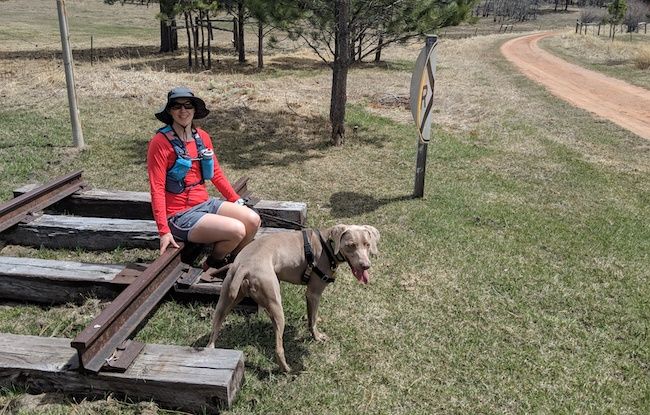
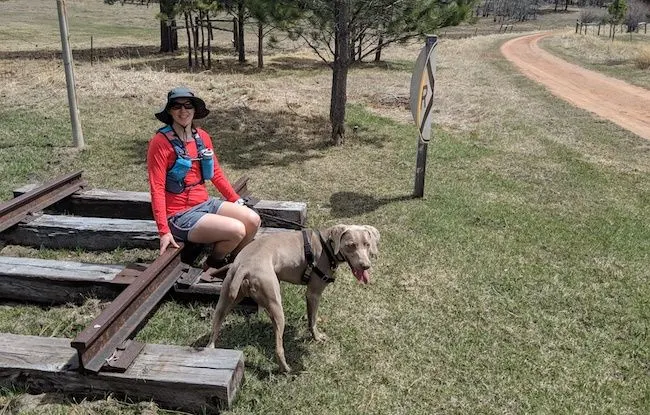
My dog is a pet, but he is also a working dog in his own way. He gives 110% at all times to whatever hes doing. Hes all drive.
And dont forget mental exercise.
Agility class tires my dog out mentally. He also goes to dog daycare once a week (physical and mental exercise) and we have employees coming and going from our house on weekdays, which keeps Remy on his toes.
All of these things are great for my smart, active young weimaraner.
But while Remy has more energy than most, he still needs a break.
So on one weekend day a week, we rest.
And my dog embraces our rest days fully. Just as he gives 110% to pulling me up a hill or plowing through the agility course, my dog knows how to take a rest day seriously too.
And by that, I mean Remy vedges out on his back, sprawled out across his bed with all four legs in the air for pretty much the whole day.
And he sleeps HARD. Harder than he does during the week. And he yips and runs in his dreams.
Of course, my dog still has energy (he always does), and if I decided not to take a rest day he would be totally cool with charging up a mountain.
HOWEVER, I think a true rest day is a nice break for my dog and I both to recharge, with truly nothing going on.
We really embrace work hard, play hard, crash hard.
If we do a walk on our rest day, its a relaxing 1 or 2 miles on a leash around the neighborhood for active recovery.
Does Your Dog Need a Rest Day?
Thats for you to decide.
I realize that true working dogs might rarely or never get an easy day. Remy is pretty pampered compared to a working ranch dog, police dog or guide dog.
Every dog is different with different jobs and we all do different activities with our dogs.
We also know most pet dogs are not getting enough exercise so we dont want to give people yet another reason to skip a walk.
On the other hand if you do walk your dog every single day, a rest day or a day of doing something else (like fetch or playing in the yard together or swimming) might be a nice change.
Or if youve introduced a new running or walking routine for your dog lately or if youve recently increased your mileage, he would absolutely appreciate a rest day. He might still have energy most dogs do but rest is still an important thing for all of us (mentally and physically).
My dogs schedule looks something like this, depending on where Im at in my own training:
- Monday: 3 mile run + agility class
- Tuesday: 5 mile run
- Wednesday: 1/2 mile walk + full day of doggy daycare
- Thursday: 1 hour walk + agility practice
- Friday: 3 mile run
- Saturday: Long run 5 to 18 miles
- Sunday: Rest or short walk
Im just using common sense and I know myself and my own dog pretty well by now. Obviously breed and age play a huge role. My dog is a hunting breed meant to run in the field all day, and hes been slowly building his endurance all his life.
No matter what your dogs work is, whether its obedience class, agility, therapy work, hanging out at your office or daily walks, he might appreciate a day off every now and then where he can mentally check out or just enjoy an easy stroll.
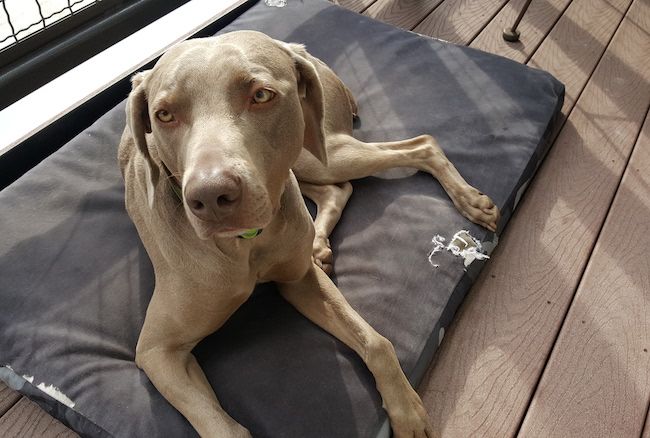
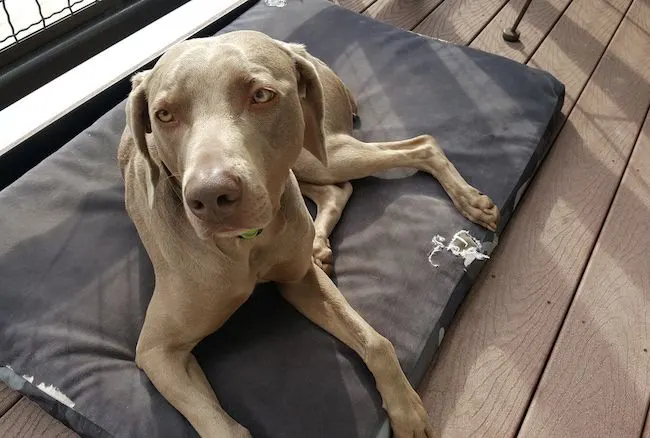
I believe in hard work and I love to push myself (100 miles, here I come!). However, because of this I also know the importance of rest.
My dog and I are the same in that way.
How about the rest of you?
Do you give your dog rest days?
Let me know in the comments!
-Lindsay
Related posts:

